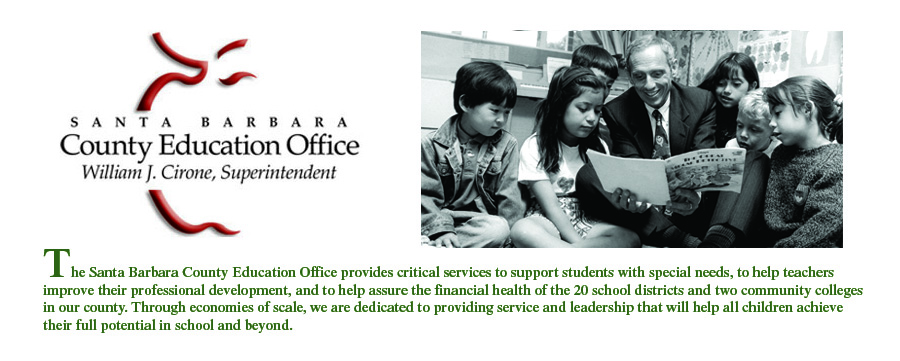Newspaper Column
March 24, 2014
Consider the power of these “seven
C’s” for little boys and girls who have a loved one suffering from drug or
alcohol addiction: “I didn’t Cause it, I can’t Cure it, I can’t Control it, but
I can take Care of myself by Communicating feelings, making healthy Choices,
and Celebrating myself.”
This message is one of many folded
into the children’s services offered through the Betty Ford Center, where
dozens of Santa Barbara-area children and families have been referred.
Recently, the Betty Ford Center and
the Hazelden Foundation merged, creating what I believe was a great day in the
history of recovery — two of the most renowned national leaders in addiction
treatment and services joining forces and beginning a new journey together. As
a member of the Hazelden Betty Ford Foundation board, I am very excited about
what this joint effort will mean for the youth and families who benefit most
from their services.
Through the Betty Ford Children’s
Program, 7- to 12-year-old children of parents or siblings who are addicted
learn skills and techniques to deal with their painful family situation. No
child is ever turned away because of an inability to pay. There is a sliding
fee scale made possible through scholarships raised by the center’s foundation.
National Director Jerry Moe
explained that science tells us these young children are at the highest risk of
having addiction problems of their own. The program targets these children
before they have taken their first drink or drug, and provides skills to help
significantly reduce the risk that they will fall into the same pattern. It
also gives young people the skills, tools, and strategies to cope with the
chaos and inconsistency of living in a family hurt by addiction.
Talking about the parts of the
program he is most proud of, Jerry said recently, “It is the joy of watching
little boys and girls truly understand that it’s not their fault. So many of
them carry guilt and shame and think they are somehow responsible for mom or
dad or an older brother or sister’s addiction.”
He said it’s truly liberating for them to fully understand that’s not
the case.
He also pointed out that when young
people come into the program the very first morning, they realize immediately
that they’re not alone. “One out of every four kids in the U.S. is growing up
in a family with someone who has this awful disease,” he explained. “It is a
disease of silence, isolation, and secrecy. Seeing other kids dealing with the
same problems and issues is relieving. It normalizes the experience,” he said.
Through the four-day program for
children, which entails about 24 hours, the center gets to develop solid
relationships with the children, and when the program is finished, staff
members stay in touch. Little boys and girls receive newsletters plus an 800
number they can call and an email address they can use if ever the need arises.
This keeps the relationship going and continues as a source of strength and
hope.
It’s important to note that parents
do not have to be patients at the Betty Ford Center for their children to take
part.
The program helps kids learn about
addiction through age-appropriate activities and enables them to talk openly in
a safe, supportive environment. It is considered a nurturing haven of help,
hope and healing.
Locally, the Santa Barbara Rescue
Mission has already referred more than 20 children and families to the center
in Rancho Mirage, with great success.
Said Rescue Mission director Rolf
Geyling: “As addiction can have a devastating impact on relationships, we have
the highest regard for Betty Ford Center’s programs to assist children and
family members of addicts. We not only refer clients but send staff for
professional development, which has led to several principles being integrated
into our own treatment efforts.”
He explained that despite the
prevalence of addiction, there are few effective treatment options for those
who struggle. “This becomes even more evident when we look at more specific
at-risk populations, such as children,” he said.
“Addiction is dangerous to
individuals of any age, but given research that demonstrates the long-term
damage addiction can wreak on developing adolescent brains, it is even more
urgent that children and teenagers struggling with addiction receive immediate
and effective treatment.”
As the largest residential
treatment center on the Central Coast, the Rescue Mission is approached every
day by people of all ages, ethnicities, and walks of life, desperate for
treatment. In the face of overwhelming need, the Rescue Mission focuses efforts
on adult treatment and refers people to a network of partners for those who
fall outside its scope. The Betty Ford Center has been one of those important
partners for serving youth.
Both the Children’s Program and the
Family Program at the Betty Ford Center are open to the public and don’t
require that a loved one be in treatment at the center.
I believe it’s important that local
families are aware of the program and especially its services for children.
Help, hope, and healing for the family can begin with one phone call to the
center, at (760) 773-4291, or an email to childrens@bettyfordcenter.org. Help
is that close.
